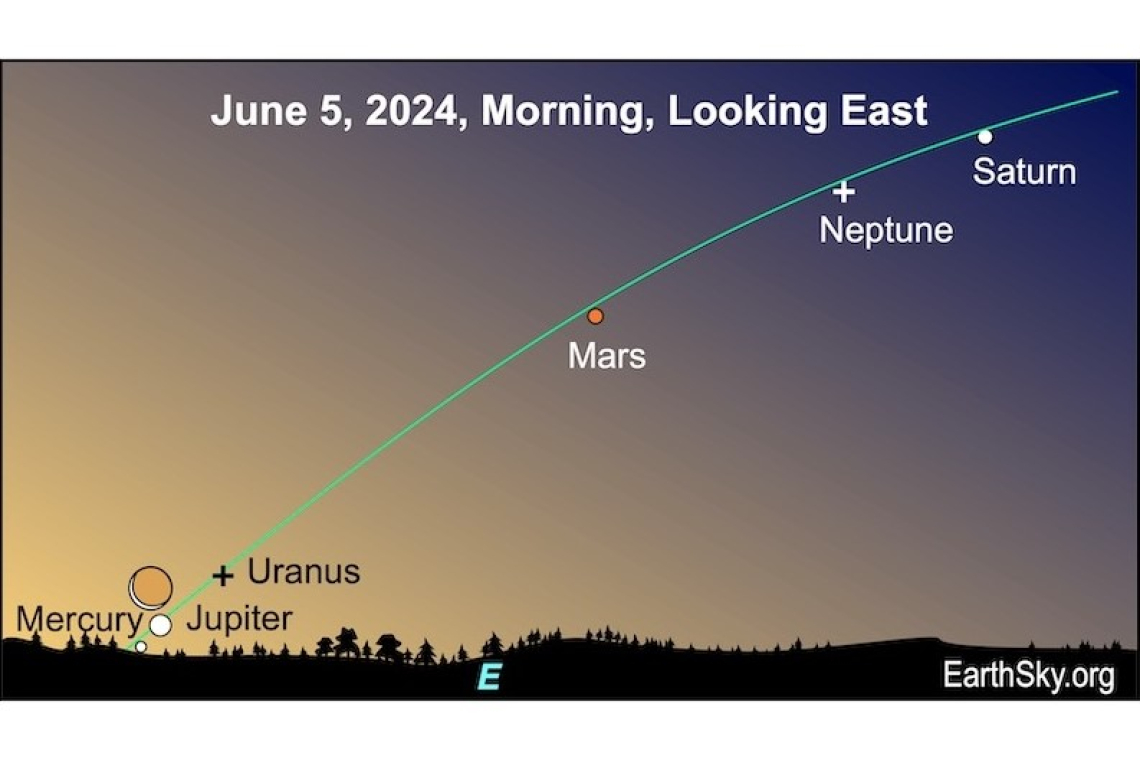~ St. Maarten’s Backyard Astronomy for June 7 - 9, 2024 ~
Sun rises at 5:35am
Sun sets at 6:46pm
Lunar phase: 1st quarter, waxing crescent
Moon rises at 7:20 am
Moon sets at 9:08 pm
This weekend it’s a show for early risers! Get up before the sun to see six planets in a row and also the chance of meteor showers! Gaze eastward with a cup of your favorite early morning beverage and enjoy the beauty of our little corner of the universe!
The planets will align in a diagonal line reaching up from the point of the coming sunrise up and to the right, towards the mid-height in the southeastern sky. Six planets may be a little overstating what you will likely actually see, but they are there, and if you have a good backyard telescope you can see them all. Without a little help, in other words with the naked eye, you’ll see Jupiter (very low, but bright) and Mercury close by. Then climbing up like a stairway to heaven, its Mars, the moon, Neptune and Saturn. ‘Where’s Venus?’, I hear you asking…good question! She’s transiting across the sun, leaving her post as the “Morning Star” to become the “Evening Star” around mid July where she will grace the late afternoon skies for about eight months, then she passes back towards the sun’s bright glare, re-emerging as the ‘Morning Star’ early next year.
Meanwhile, the meteor shower known as the Arietids can be seen in the dark hours before dawn breaks. There won’t be much moonlight to hinder meteor watching in the morning sky. The Arietids are sometimes said to be the most active daytime meteor shower on our celestial calendar.
For those who sleep in, have no fear, the evenings will be worth star-gazing for sure! On Friday and Saturday evenings (June 7 and 8) the waxing crescent moon will shine near Pollux and Castor, the twin stars of Gemini. Even though they are called twins, they don’t look alike. Pollux is a bit brighter and shines with a golden light, while Castor is a white star.
The moon was in its new moon phase earlier this week, and it is still slim and beautifully showing the unlit part of the sphere aglow with a dim light we call earthshine. Sunlight reflected from Earth back onto the moon’s surface. The old folks called it, “the old moon in the arms of the new moon.” Enjoy our beautiful island, the sea and the sky, day and night, it’s a glorious gift to us all.
Thank you for keeping up with the Night Sky articles, backyard astronomy designed for St. Maarten sky viewing. FYI: If you are out later on in the week, note that each star rises about four minutes earlier each day than written here, and the moon rises 50 minutes later. Night Sky is researched and compiled by Lisa Davis-Burnett. Earthsky.org is a key resource for information and images. Questions or comments? Email This email address is being protected from spambots. You need JavaScript enabled to view it.







